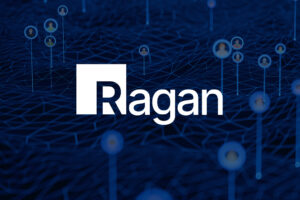Employee well-being trends for 2021 point to a safer, stronger workplace
Ragan’s CEO shares top predictions and priorities for leaders to consider in the new year.

After what has been deemed the most stressful year ever for employees, 2021 will be a year of evolution and innovation in workplace wellness.
No longer does “wellness” qualify as a nice-to-have employee benefit, it is now tightly integrated with workplace strategy. All smart employers have not only witnessed but are embracing the fact that employees who are healthy—mentally, physically, financially, socially—are more productive and loyal. We are witnessing another industrial revolution.
The pandemic wrought waves of disruption—a health crisis, the shift to remote work, the economic turmoil. Then the social-justice movement spilled onto America’s streets, forcing organizations to reckon with their own often flawed records. Now there’s no looking back. Expect to see permanent change in several areas of employee well-being.
Mental health will be destigmatized. Via virtual offerings, more open communication and a focus on corporate culture, employers will be investing time and money into improving employees’ mental well-being. Investments in artificial intelligence will continue to rise, as AI can accelerate personalized care and design of benefits while removing some of the discomfort employees may feel about sharing their mental health issues with other humans.
Remote work. We’ve proven that employees can work from home effectively. And 2021 will be the year that the die is cast as the employee handbook is updated with remote work guidelines. The concept of a corporate headquarters will expand to include the digital workplace where the intranet and collaborative platforms become the online headquarters for all employees.
Benefits. Brain-health and physical-health benefits will expand to include incentives in the form of lower insurance costs for those who hit certain objectives. Long-term sick leave, support for relatives and paid time off for family matters will become par for the new course. What were considered soft benefits—like access to meditation or yoga apps and health coaches—will be integrated into plans.
Financial wellness. Financial health is one of the biggest stressors and on-the-job distractions for employees. Employees will increasingly expect their company to help them with planning for the “now” and for retirement. Student-loan support and increased childcare and child-education programs, retirement planning and mortgage support are on the table. We’ll see employers being held more accountable for equity in pay. Speaking of DEI….
DE&I. Employees expect to come to work and see themselves, or people like them, represented across the organization. They expect to be comfortable bringing their whole selves to work. Corporations will be upping the ante in 2021, committing billions of dollars to combating racial and economic inequity. We’ll see more communication around Employee Assistance Programs and a proliferation of Employee Resource Groups.
Upskilling and resilience training. With research pointing to the fact that most employees will not have the skills and capabilities needed for their jobs as soon as two years from now as those jobs evolve, employers will be investing in training current employees to secure their future. And with younger generations missing out on a year of professional development, employers will be creating new ways of training all their generations and keeping them engaged in their work.
More collaboration between Communications & Human Resources. If you build it, will they come? We’ll see the silos broken down between the communications and HR departments to ensure effective and consistent messaging around wellness programs. With a proliferation of wellness benefits being added to the offerings, a communications strategy around the rollout is imperative. Further, internal communicators and HR professionals are the counselors to the C-suite on employee culture and morale and their position in the company will be elevated like never before.
Businesses large and small have a unique opportunity to give their employees a stronger voice in the decisions being made about workplace culture and about their needs. The simple acts of listening and responding are among the least expensive yet highly valuable attributes of a healthy organization.
Diane Schwartz is CEO of Ragan Communications, parent company of Ragan.com.







